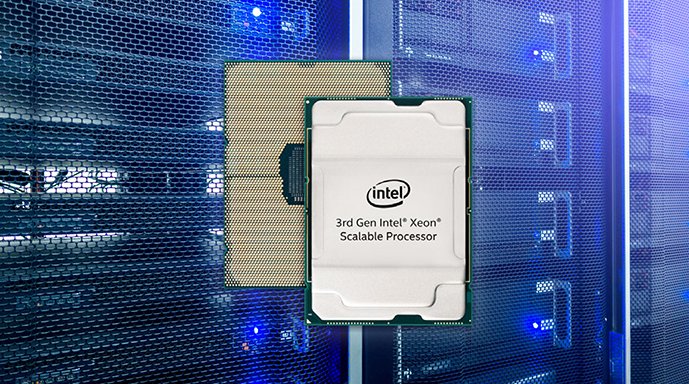rack mounted muscle —
Chipzilla’s new server processors bring more cores, more RAM, more features.
Jim Salter
–

Enlarge / Thirty-six individual models of Ice Lake Xeon Scalable processor launch today, with immediate retail availability expected from major system vendors, including Supermicro, HPE, and Dell.
Intel launched a new batch of third-generation Xeon server processors today. Significantly, these are Ice Lake processors—meaning Intel’s 10 nm process, not the increasingly outdated 14 nm process that the majority of Intel’s lineup has been stuck on for many years now.
Today’s selection includes a staggering 36 separate SKUs, ranging from 8-core Xeon Silver 4309Y all the way up to 40-core Xeon Platinum 8380.
Gen-on-gen performance improvement
There’s no question that today’s Ice Lake Xeons are a significant, badly needed improvement to Intel’s server lineup. Similarly to Intel’s Ice Lake notebook parts, clock speeds are down from the older 14 nm parts—but IPC is up more than enough to compensate, and unlike the Ice Lake notebook parts, these Xeons generally boast more cores than the last generations do, rather than fewer.
We haven’t had the chance to go hands-on with today’s Ice Lake Xeons ourselves, but Anandtech did. Comparing today’s 40-core Xeon 8380 to 2019’s 28-core Xeon 8280, single-threaded tests generally come out 3 to 15 percent in favor of the newer generation—and multi-threaded tests favor the newer part by a whopping 54 to 65 percent.
This, of course, ignores the elephant in the room—Intel’s actual competition, which comes in the form of AMD Epyc processors. As big an improvement as Xeon 8380 is, it’s still not enough to catch up to Epyc Milan, or even the older Epyc Rome.
Epyc 7662, 75F3, 7742, 7713, and 7763 all beat the 8380 handily in both integer and floating point multi-threaded metrics. Epyc 75F3 and 7763 beat it in single-threaded metrics as well, with 75F3 doing so by a fairly wide margin.
Feature and efficiency improvements
With the new Ice Lake Xeons still lagging significantly behind AMD (and Ampere, an Arm-based server processor), Intel’s marketing strategy necessarily focuses on Intel-only features and specific use cases rather than sheer muscle.
Features like the AVX-512 extended instruction set, Software Guard Extensions (SGX), and Optane DC Persistent Memory are only found on Intel systems—and they can represent major performance enhancements or even make-or-break necessities for workloads specifically tailored to them.
The new generation of Xeon brings support for PCIe 4, 4TiB of DRAM (up from 1TiB), a new 512GiB SGX Enclave—and a lower price. The 40-core Xeon 8380 is “only” $8,100, compared to the 28-core Xeon 8280 at $10,100.
Xeon Platinum 8380 does give up one feature as compared to 8280—fewer individual sockets. You can build an 8380 system in either single-socket or dual-socket variants, while 8280 supported 4- and 8-socket platforms as well.
Although 8380’s overall TDP is up—270 W, compared to 8280’s 205 W—the new part is still more efficient overall, at 6.75 W/core to 8280’s 7.3 W/core. The increase in efficiency becomes even more obvious when comparing SPECint or SPECfp scores per watt.
Availability
Between the limited availability of first-generation Ice Lake notebook CPUs and limited availability of earlier batches of third-generation Xeon Scalable, we definitely had availability concerns about this newest batch of Ice Lake Xeons.
We spoke to Supermicro Senior VP Vik Malyala about the new systems, and he told us that Supermicro will be able to ship new Ice Lake-based servers in sufficient quantity to meet demand.
Industry analysts at Trendforce agree, claiming that new Ice Lake CPUs will likely account for 40 percent of Intel’s total CPU shipments in the fourth quarter of 2021. Trendforce also notes that despite AMD’s commanding performance and under-load power efficiency advantages, Intel retains a 92 percent market share in the x86 server segment.

